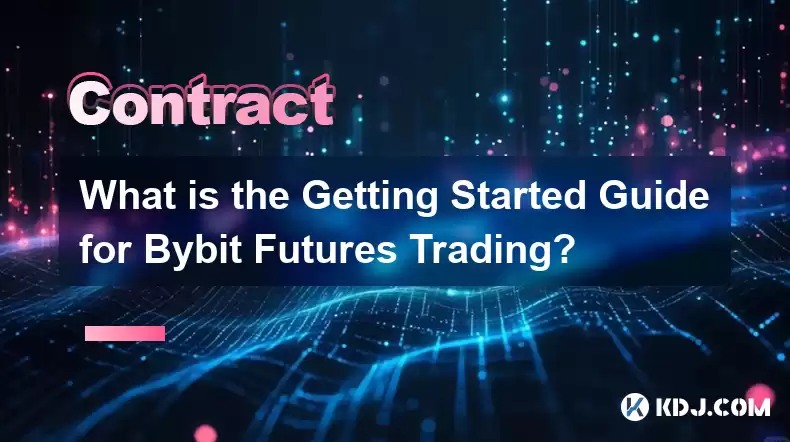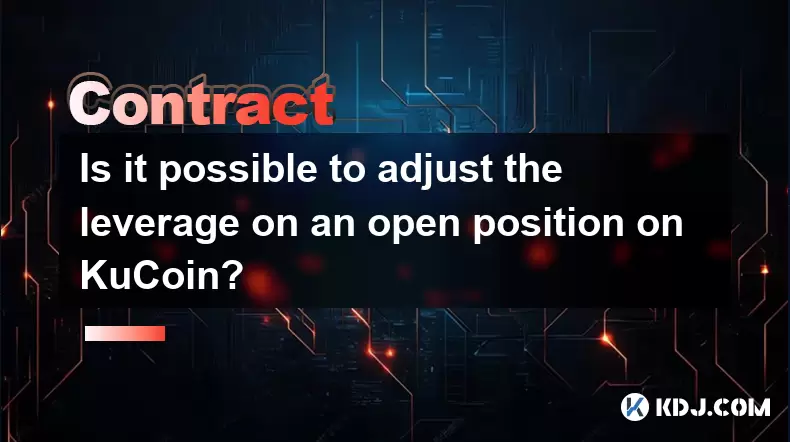-
 Bitcoin
Bitcoin $117700
-1.00% -
 Ethereum
Ethereum $4458
-3.91% -
 XRP
XRP $3.119
0.14% -
 Tether USDt
Tether USDt $1.001
-0.02% -
 BNB
BNB $836.6
-1.56% -
 Solana
Solana $189.5
-3.90% -
 USDC
USDC $0.9998
-0.02% -
 Dogecoin
Dogecoin $0.2335
1.29% -
 Cardano
Cardano $0.9642
1.51% -
 TRON
TRON $0.3539
-1.19% -
 Hyperliquid
Hyperliquid $47.41
-1.84% -
 Chainlink
Chainlink $21.92
-3.28% -
 Stellar
Stellar $0.4286
-0.23% -
 Sui
Sui $3.724
-3.29% -
 Bitcoin Cash
Bitcoin Cash $594.8
-0.78% -
 Ethena USDe
Ethena USDe $1.001
0.04% -
 Hedera
Hedera $0.2501
-2.06% -
 Avalanche
Avalanche $23.96
-4.87% -
 Litecoin
Litecoin $119.0
-2.32% -
 Toncoin
Toncoin $3.473
0.82% -
 UNUS SED LEO
UNUS SED LEO $9.596
0.17% -
 Shiba Inu
Shiba Inu $0.00001301
-0.39% -
 Uniswap
Uniswap $11.03
-0.25% -
 Polkadot
Polkadot $3.935
-2.62% -
 Dai
Dai $1.000
0.01% -
 Bitget Token
Bitget Token $4.564
-1.76% -
 Cronos
Cronos $0.1512
-4.11% -
 Ethena
Ethena $0.7306
-1.09% -
 Pepe
Pepe $0.00001087
-2.68% -
 Aave
Aave $300.2
-4.00%
What is the Getting Started Guide for Bybit Futures Trading?
Bybit offers futures trading with up to 100x leverage, requiring account setup, KYC, and fund deposits. Use stop-loss and take-profit orders for risk management.
Apr 03, 2025 at 12:42 am

Bybit is a popular cryptocurrency exchange that offers futures trading, allowing users to speculate on the price movements of various cryptocurrencies. If you're new to Bybit futures trading, this guide will walk you through the essential steps to get started. From setting up your account to understanding the basics of futures trading, we'll cover everything you need to know to begin trading on Bybit.
Setting Up Your Bybit Account
To start trading futures on Bybit, you first need to create an account. Visit the Bybit website and click on the "Register" button. You'll be prompted to enter your email address and create a strong password. After verifying your email, you'll need to complete the KYC (Know Your Customer) process. This involves submitting a government-issued ID and a selfie to comply with regulatory requirements. Once your account is verified, you can proceed to the next steps.
Depositing Funds into Your Bybit Account
Before you can start trading, you need to deposit funds into your Bybit account. Navigate to the "Assets" section and click on "Deposit." Choose the cryptocurrency you want to deposit, such as Bitcoin or USDT, and follow the instructions to send funds to your Bybit wallet. Make sure to double-check the deposit address to avoid any errors. Once the funds are credited to your account, you're ready to start trading futures.
Understanding Bybit Futures Contracts
Bybit offers two types of futures contracts: Inverse Perpetual Contracts and USDT Perpetual Contracts. Inverse Perpetual Contracts are denominated in the underlying cryptocurrency, such as Bitcoin, and are settled in the same cryptocurrency. USDT Perpetual Contracts are denominated in USDT and settled in USDT. Both types of contracts allow traders to speculate on the price movements of cryptocurrencies without an expiration date, making them popular among traders.
Navigating the Bybit Trading Interface
The Bybit trading interface is user-friendly and packed with features to help you trade effectively. The main components include the order book, trading chart, and order entry panel. The order book displays the current buy and sell orders, while the trading chart provides real-time price data and technical indicators. The order entry panel allows you to place different types of orders, such as market orders, limit orders, and stop orders. Familiarize yourself with these components to enhance your trading experience.
Placing Your First Futures Trade on Bybit
To place your first futures trade on Bybit, follow these steps:
- Navigate to the "Trade" section and select the futures contract you want to trade.
- Choose the leverage you want to use. Bybit offers up to 100x leverage for certain contracts.
- Decide on the type of order you want to place. For beginners, a market order is a good starting point.
- Enter the amount you want to trade and click "Buy" or "Sell" to execute the order.
Once your order is filled, you'll see your position in the "Positions" section of the trading interface.
Managing Risk with Stop-Loss and Take-Profit Orders
Effective risk management is crucial when trading futures. Bybit allows you to set stop-loss and take-profit orders to help manage your risk. A stop-loss order automatically closes your position if the price moves against you by a certain amount, limiting your potential losses. A take-profit order automatically closes your position when the price reaches a predetermined level, locking in your profits. Use these tools to protect your capital and maximize your trading performance.
Understanding Liquidation and Margin Calls
When trading with leverage, it's important to understand the concepts of liquidation and margin calls. Liquidation occurs when the value of your position falls below the maintenance margin level, and Bybit automatically closes your position to prevent further losses. A margin call is a warning that your position is approaching the liquidation level, giving you the opportunity to add more funds or close the position manually. Always monitor your positions closely and maintain sufficient margin to avoid liquidation.
Using Bybit's Advanced Trading Features
Bybit offers several advanced trading features to enhance your trading strategy. These include:
- Conditional Orders: These allow you to set specific conditions for your orders, such as triggering a buy order when the price reaches a certain level.
- Post-Only Orders: These ensure that your order is added to the order book without being immediately filled, helping you avoid paying taker fees.
- Trigger Orders: These are similar to conditional orders but are used to manage existing positions, such as closing a position when the price hits a certain level.
Experiment with these features to refine your trading approach and improve your results.
Monitoring Your Trading Performance
To track your trading performance on Bybit, use the "Trade History" and "Positions" sections of the platform. The "Trade History" section shows all your past trades, including entry and exit prices, profits, and losses. The "Positions" section displays your current open positions, unrealized profits or losses, and margin levels. Regularly review your trading performance to identify areas for improvement and adjust your strategy accordingly.
Staying Informed with Bybit's Market Insights
Bybit provides a wealth of market insights and educational resources to help you stay informed and improve your trading skills. The "Insights" section of the Bybit website features articles, videos, and webinars covering various aspects of cryptocurrency trading. Additionally, Bybit's social media channels and blog offer real-time market updates and analysis. Make use of these resources to stay ahead of market trends and enhance your trading knowledge.
Common Questions Related to Bybit Futures Trading
What is the minimum deposit required to start trading futures on Bybit?
There is no minimum deposit required to start trading futures on Bybit. However, you'll need to deposit enough funds to cover the margin requirements for the contracts you want to trade.
Can I trade futures on Bybit without completing KYC?
No, you must complete the KYC process to trade futures on Bybit. This is a regulatory requirement to ensure the security and integrity of the platform.
What is the maximum leverage available on Bybit?
Bybit offers up to 100x leverage for certain futures contracts. However, the available leverage may vary depending on the specific contract and market conditions.
How do I calculate my potential profits and losses on Bybit futures?
To calculate your potential profits and losses, consider the entry price, exit price, position size, and leverage. Bybit's trading interface provides real-time data on unrealized profits and losses for your open positions.
What should I do if I receive a margin call on Bybit?
If you receive a margin call, you have two options: add more funds to your account to increase your margin, or close your position to avoid liquidation. Monitor your positions closely and act quickly to manage your risk effectively.
Disclaimer:info@kdj.com
The information provided is not trading advice. kdj.com does not assume any responsibility for any investments made based on the information provided in this article. Cryptocurrencies are highly volatile and it is highly recommended that you invest with caution after thorough research!
If you believe that the content used on this website infringes your copyright, please contact us immediately (info@kdj.com) and we will delete it promptly.
- Kazakhstan's Crypto Leap: Bitcoin ETF and Central Asia's Digital Finance Future
- 2025-08-13 12:45:19
- BlockDAG Presale Blazes Past $371M: Fundraising Frenzy Fuels Crypto Sensation
- 2025-08-13 13:05:21
- Meme Coins: Chasing the 2025 Surge – Which Will Moonshot?
- 2025-08-13 10:25:23
- Bitcoin's Wild Ride: Rally, Pullback, and What's Next
- 2025-08-13 10:25:23
- Bitcoin, Bitmax, and Institutional Demand: A New Era of Crypto Investment
- 2025-08-13 10:45:12
- Solana, ROAM, and Airdrops: What's the Buzz in 2025?
- 2025-08-13 11:35:13
Related knowledge

Is it possible to adjust the leverage on an open position on KuCoin?
Aug 09,2025 at 08:21pm
Understanding Leverage in KuCoin Futures TradingLeverage in KuCoin Futures allows traders to amplify their exposure to price movements by borrowing fu...

What cryptocurrencies are supported as collateral on KuCoin Futures?
Aug 11,2025 at 04:21am
Overview of KuCoin Futures and Collateral MechanismKuCoin Futures is a derivatives trading platform that allows users to trade perpetual and delivery ...

What is the difference between realized and unrealized PNL on KuCoin?
Aug 09,2025 at 01:49am
Understanding Realized and Unrealized PNL on KuCoinWhen trading on KuCoin, especially in futures and perpetual contracts, understanding the distinctio...

What different order types are available to use on KuCoin Futures?
Aug 13,2025 at 11:35am
Understanding Order Types on KuCoin FuturesKuCoin Futures offers a comprehensive range of order types to accommodate different trading strategies and ...

How does KuCoin Futures compare against Binance Futures in terms of features?
Aug 09,2025 at 03:22am
Trading Interface and User ExperienceThe trading interface is a critical component when comparing KuCoin Futures and Binance Futures, as it directly i...

How can I manage risk when applying high leverage on KuCoin?
Aug 13,2025 at 11:35am
Understanding High Leverage and Its Implications on KuCoinHigh leverage in cryptocurrency trading allows users to control larger positions with a rela...

Is it possible to adjust the leverage on an open position on KuCoin?
Aug 09,2025 at 08:21pm
Understanding Leverage in KuCoin Futures TradingLeverage in KuCoin Futures allows traders to amplify their exposure to price movements by borrowing fu...

What cryptocurrencies are supported as collateral on KuCoin Futures?
Aug 11,2025 at 04:21am
Overview of KuCoin Futures and Collateral MechanismKuCoin Futures is a derivatives trading platform that allows users to trade perpetual and delivery ...

What is the difference between realized and unrealized PNL on KuCoin?
Aug 09,2025 at 01:49am
Understanding Realized and Unrealized PNL on KuCoinWhen trading on KuCoin, especially in futures and perpetual contracts, understanding the distinctio...

What different order types are available to use on KuCoin Futures?
Aug 13,2025 at 11:35am
Understanding Order Types on KuCoin FuturesKuCoin Futures offers a comprehensive range of order types to accommodate different trading strategies and ...

How does KuCoin Futures compare against Binance Futures in terms of features?
Aug 09,2025 at 03:22am
Trading Interface and User ExperienceThe trading interface is a critical component when comparing KuCoin Futures and Binance Futures, as it directly i...

How can I manage risk when applying high leverage on KuCoin?
Aug 13,2025 at 11:35am
Understanding High Leverage and Its Implications on KuCoinHigh leverage in cryptocurrency trading allows users to control larger positions with a rela...
See all articles

























































































